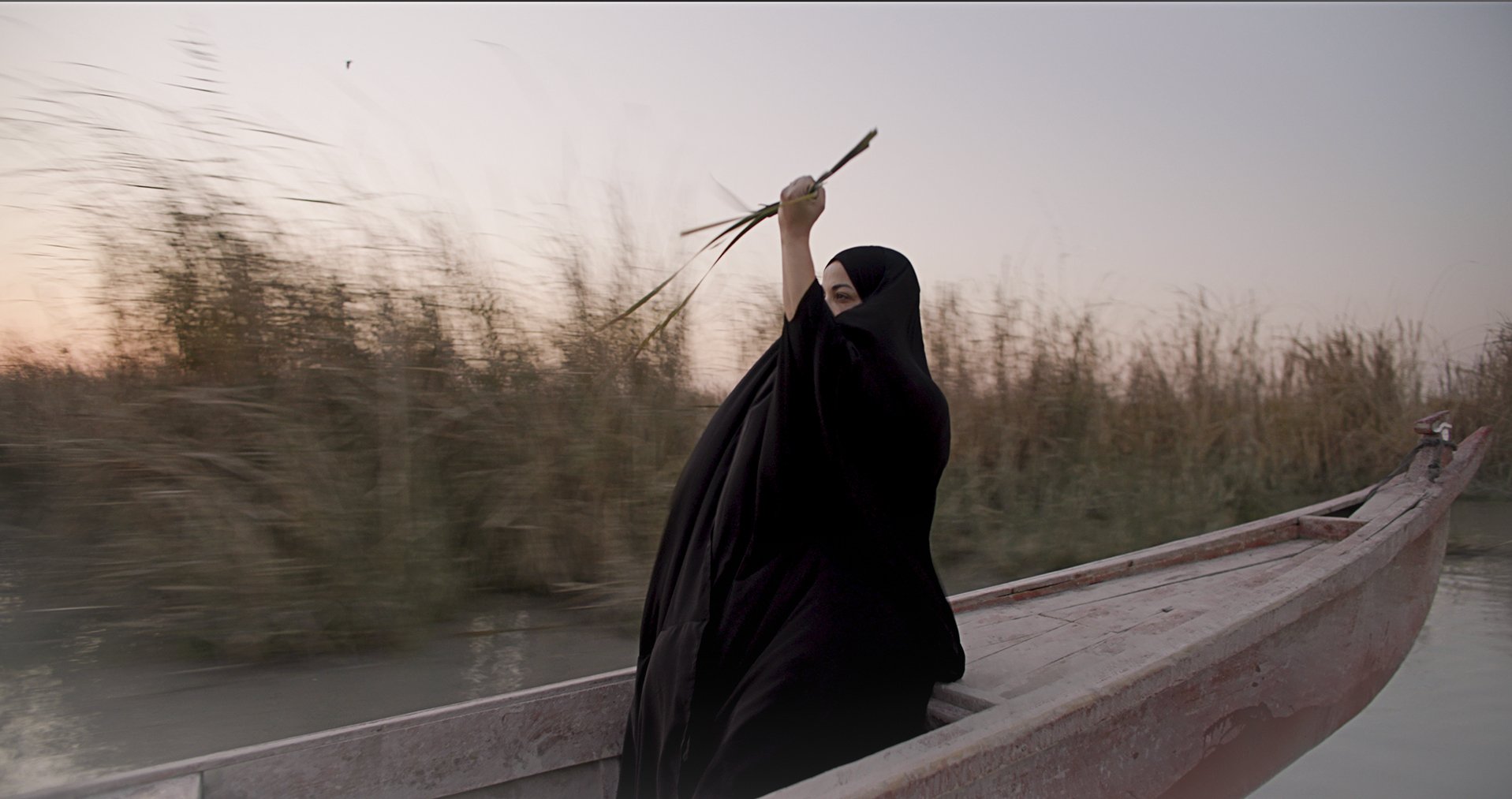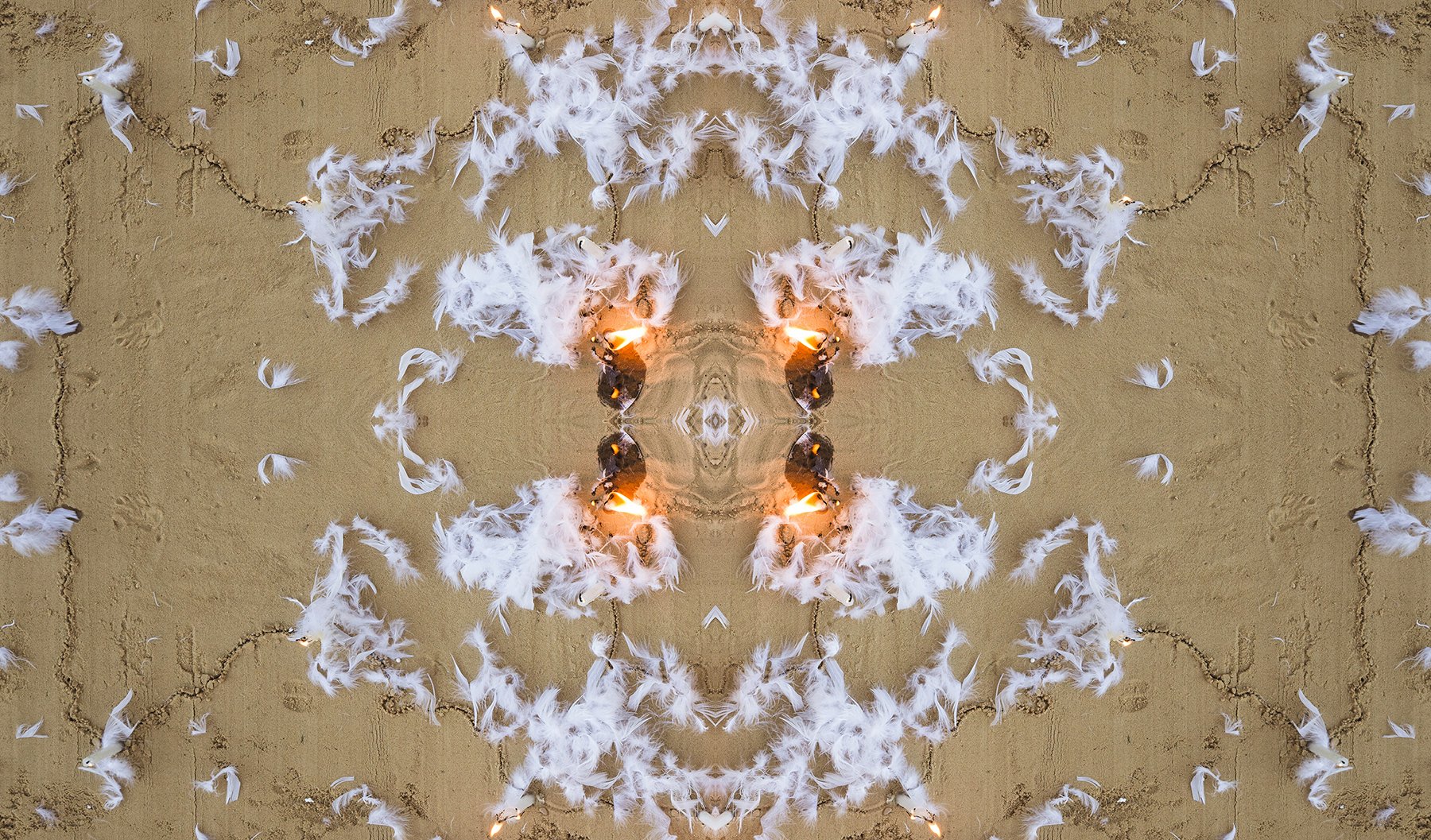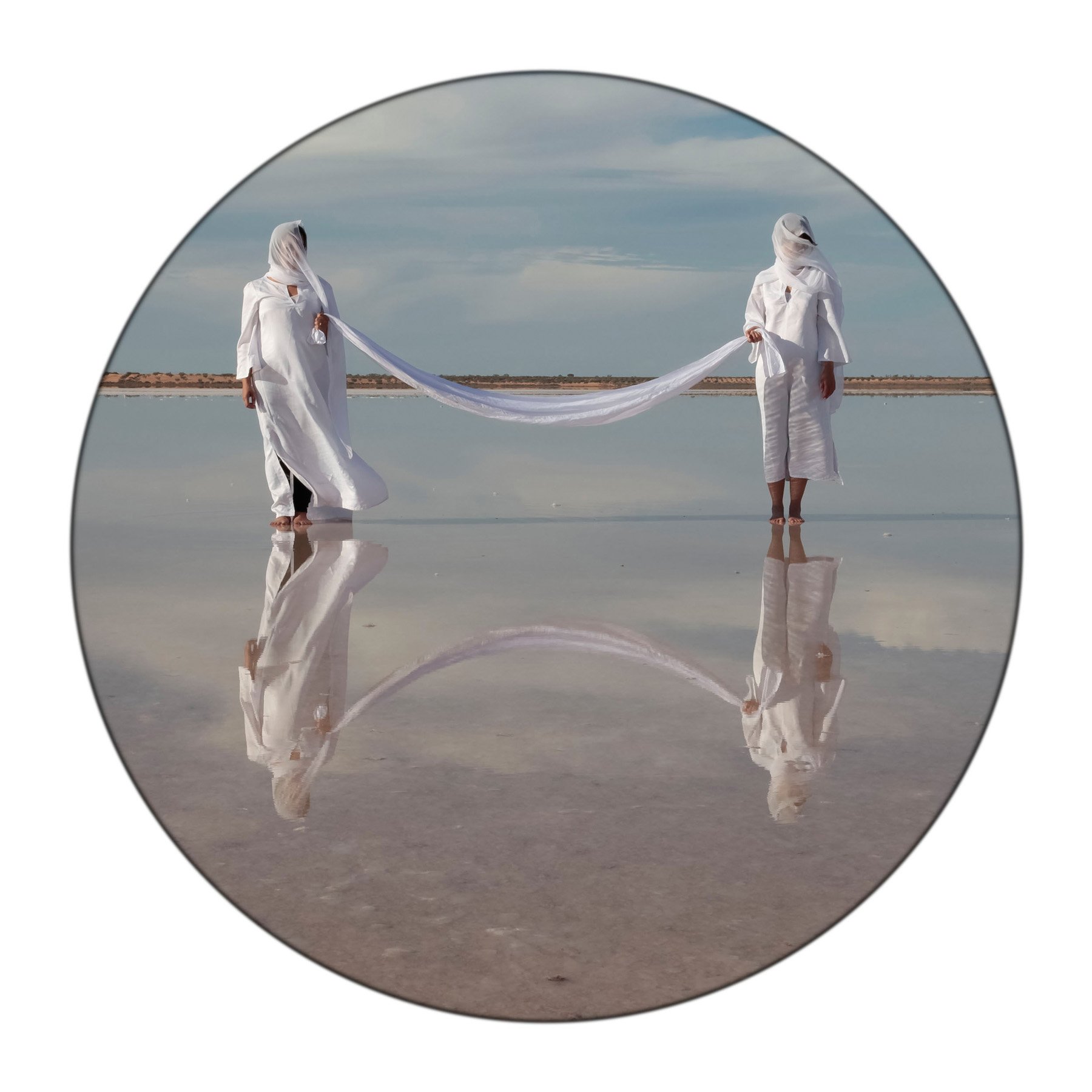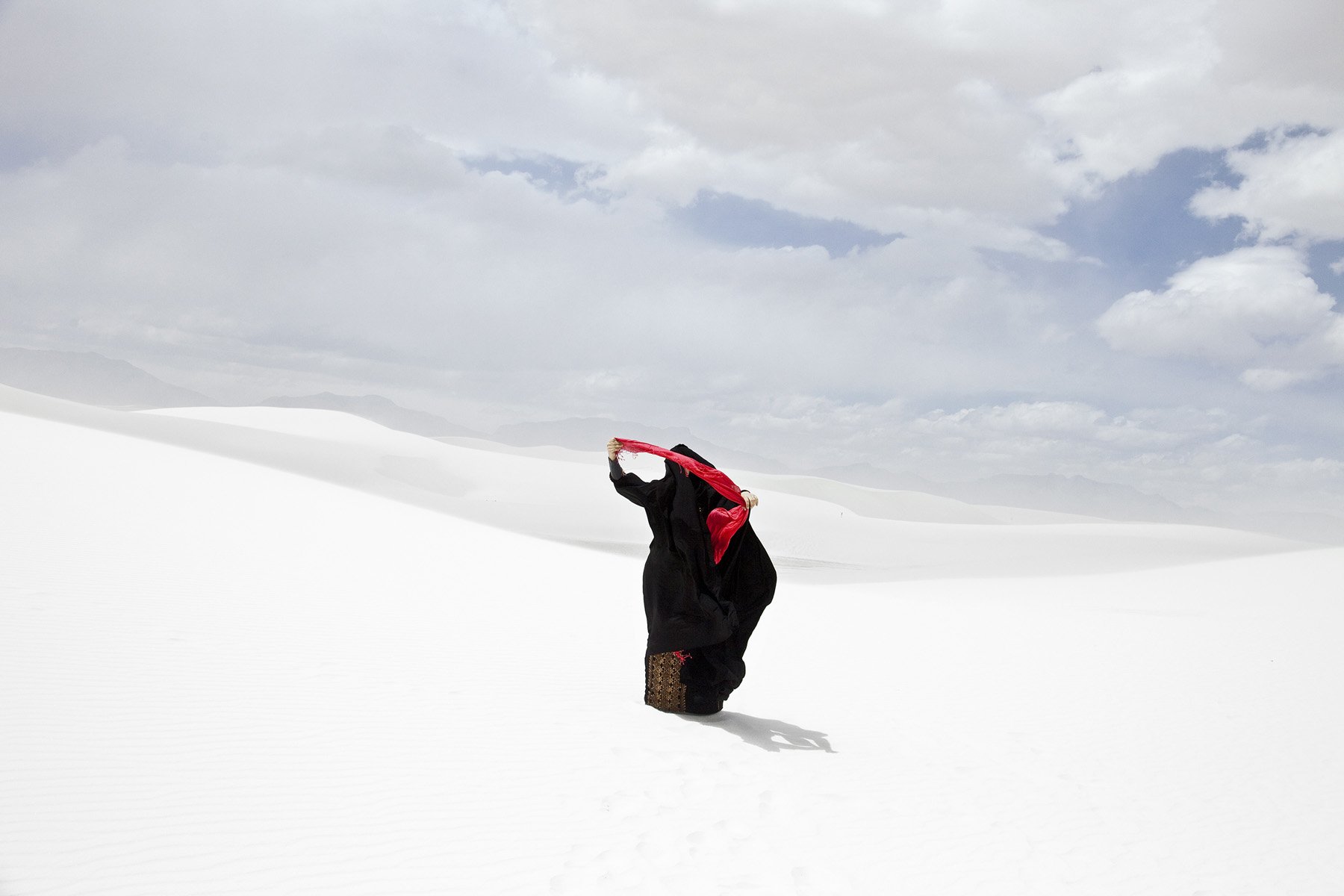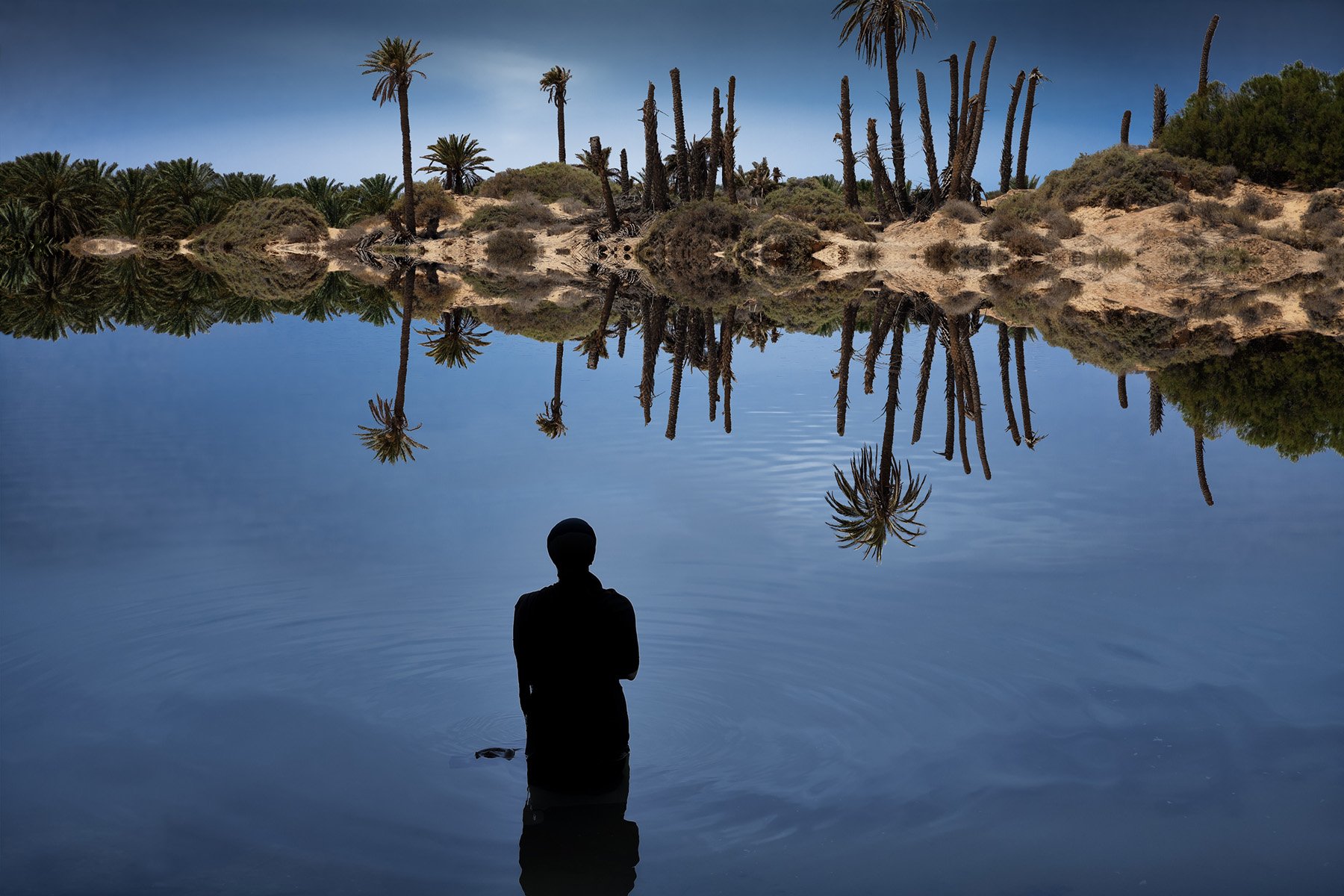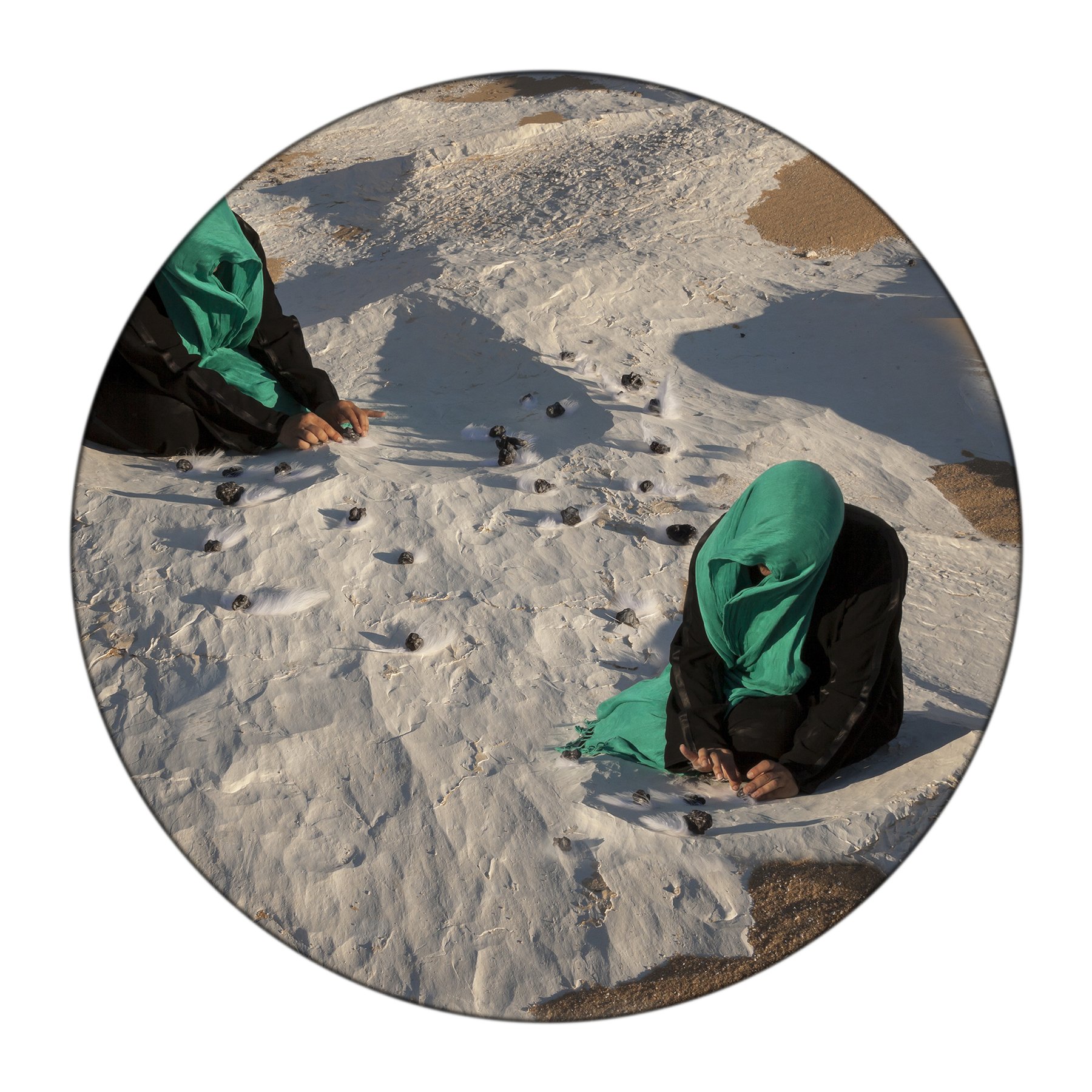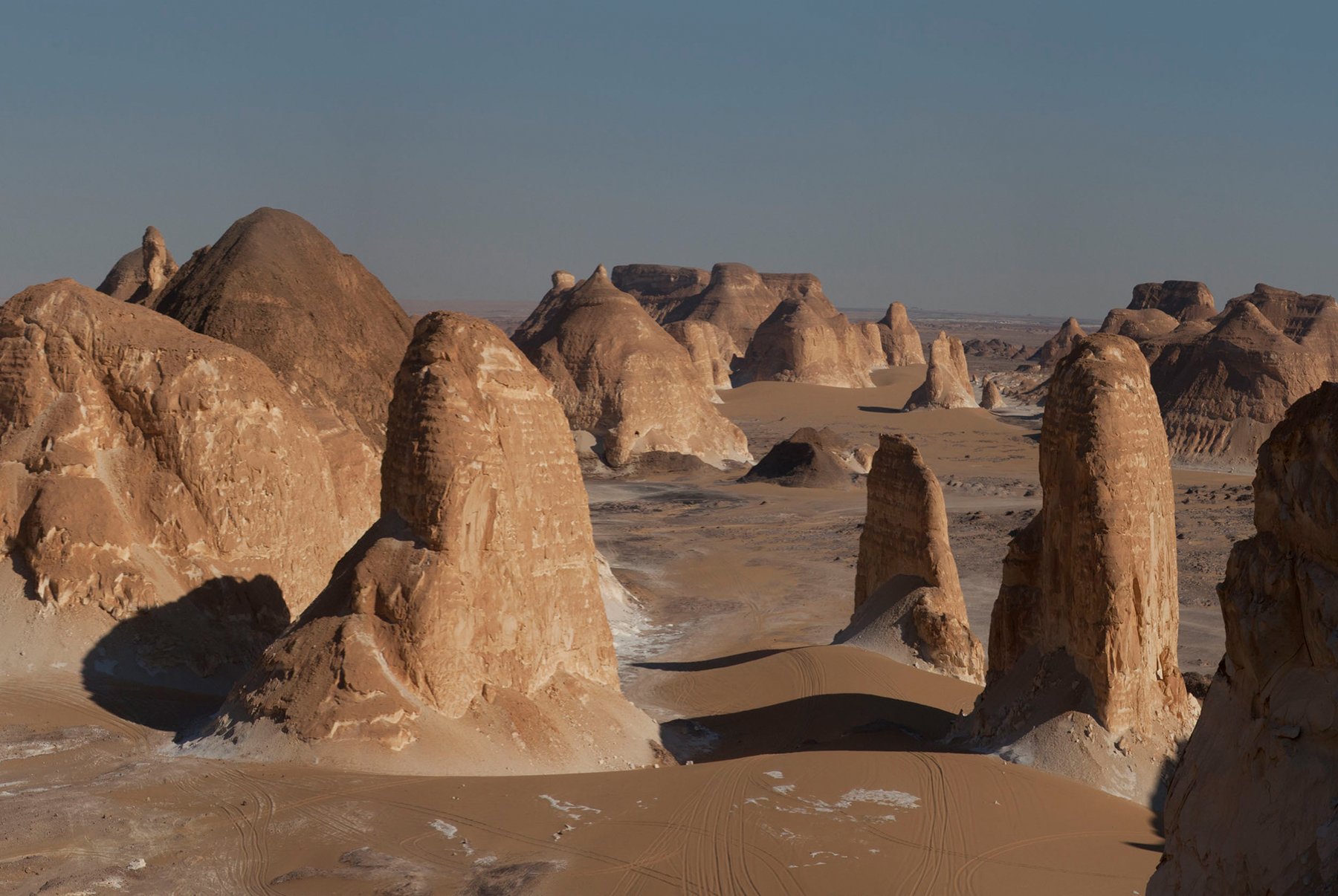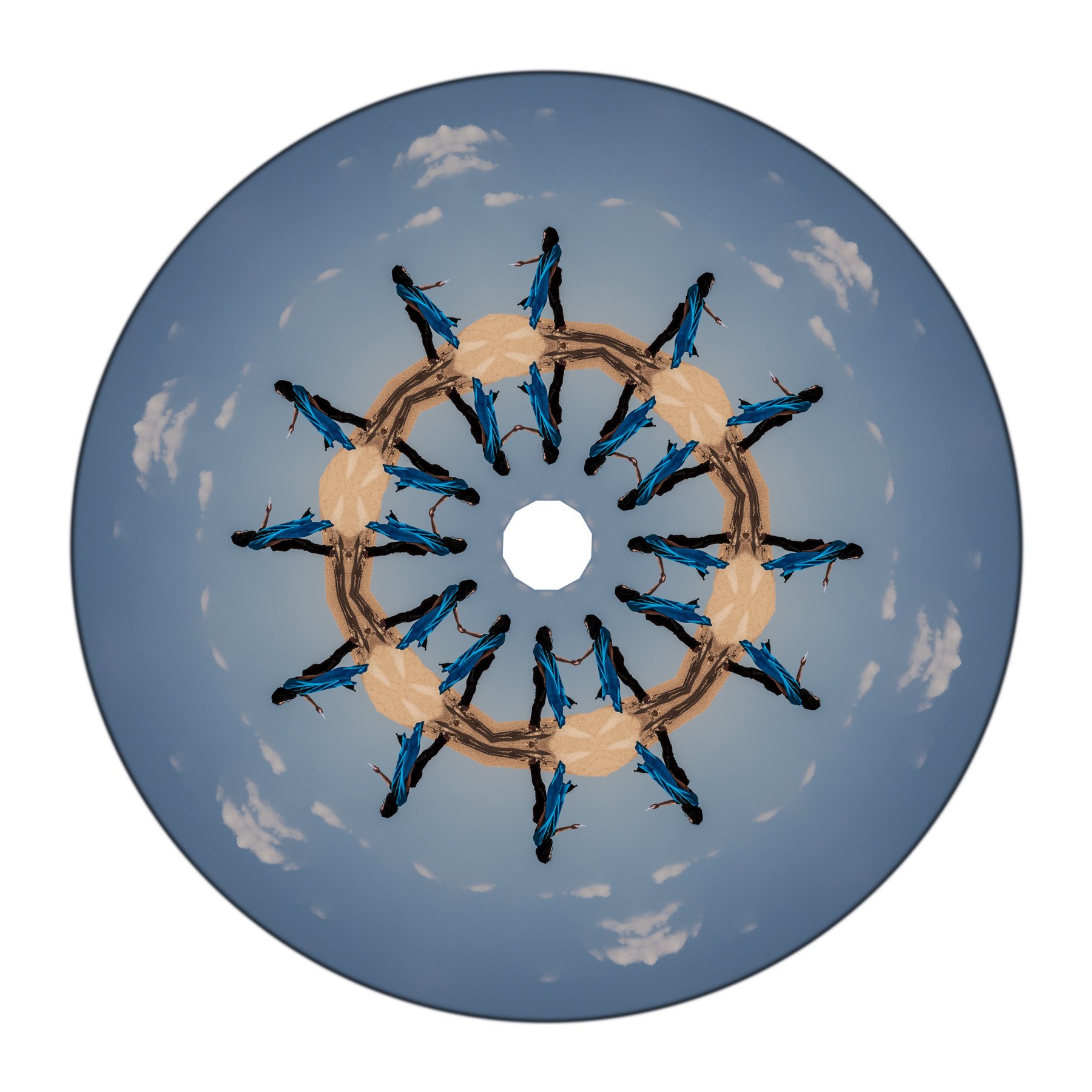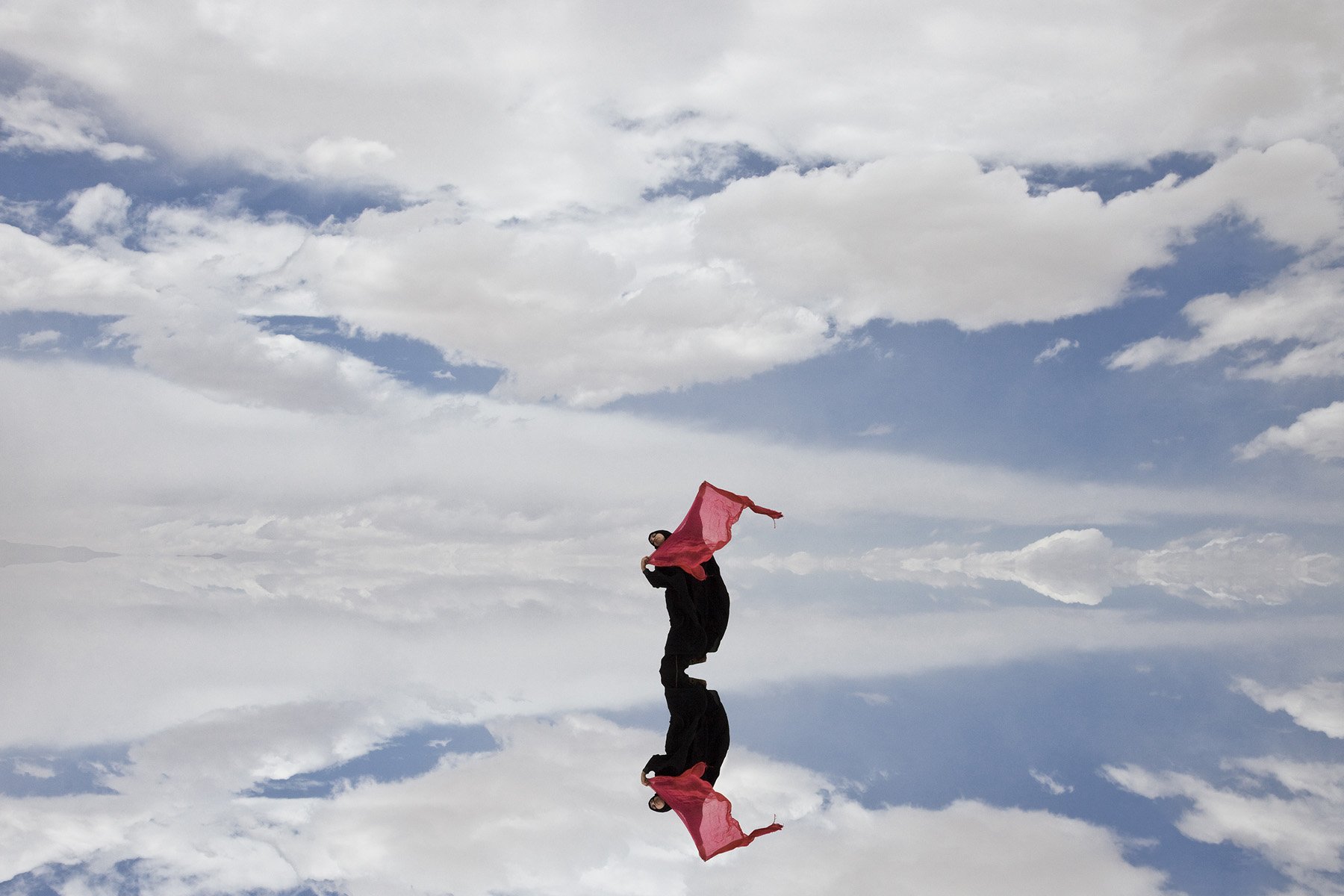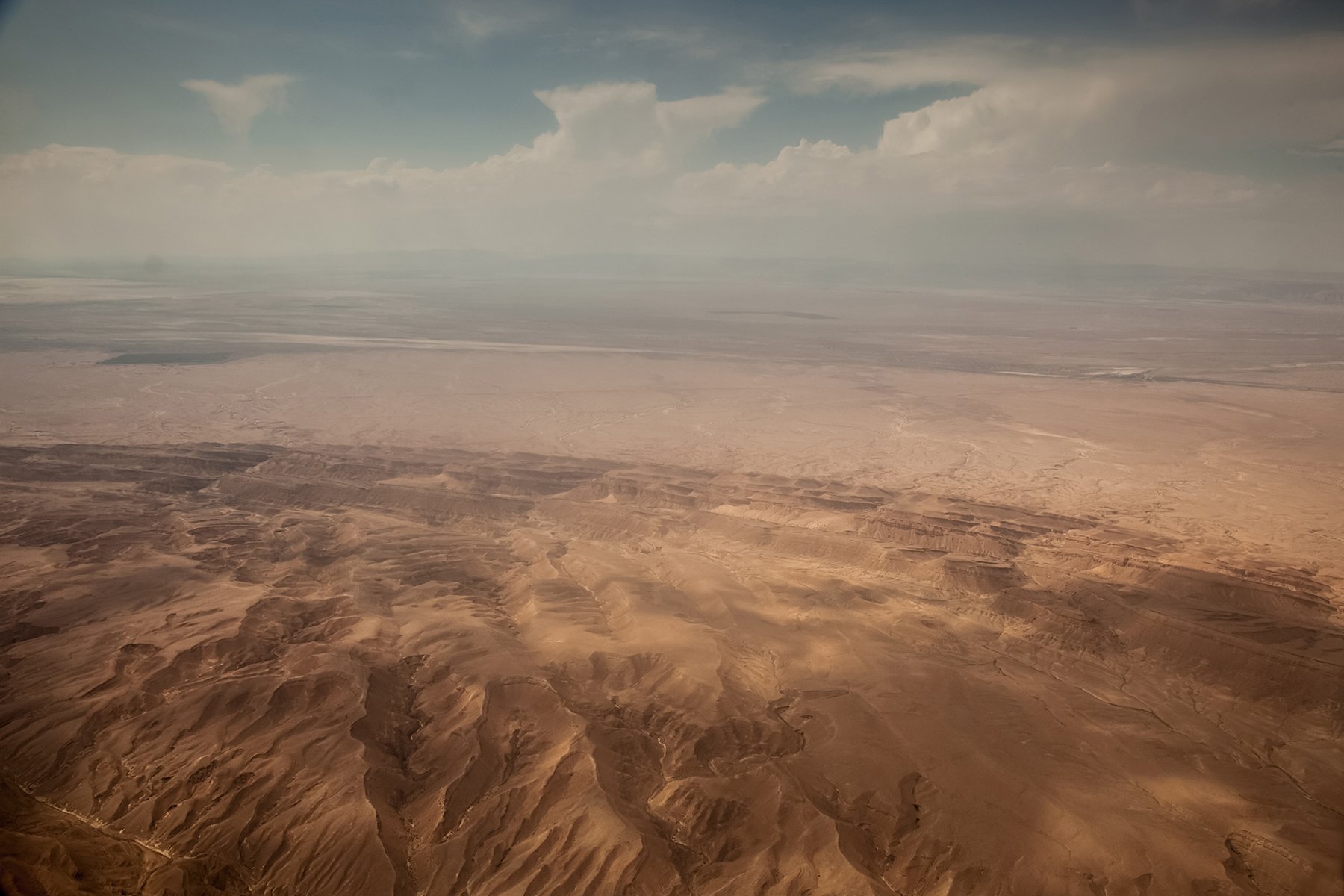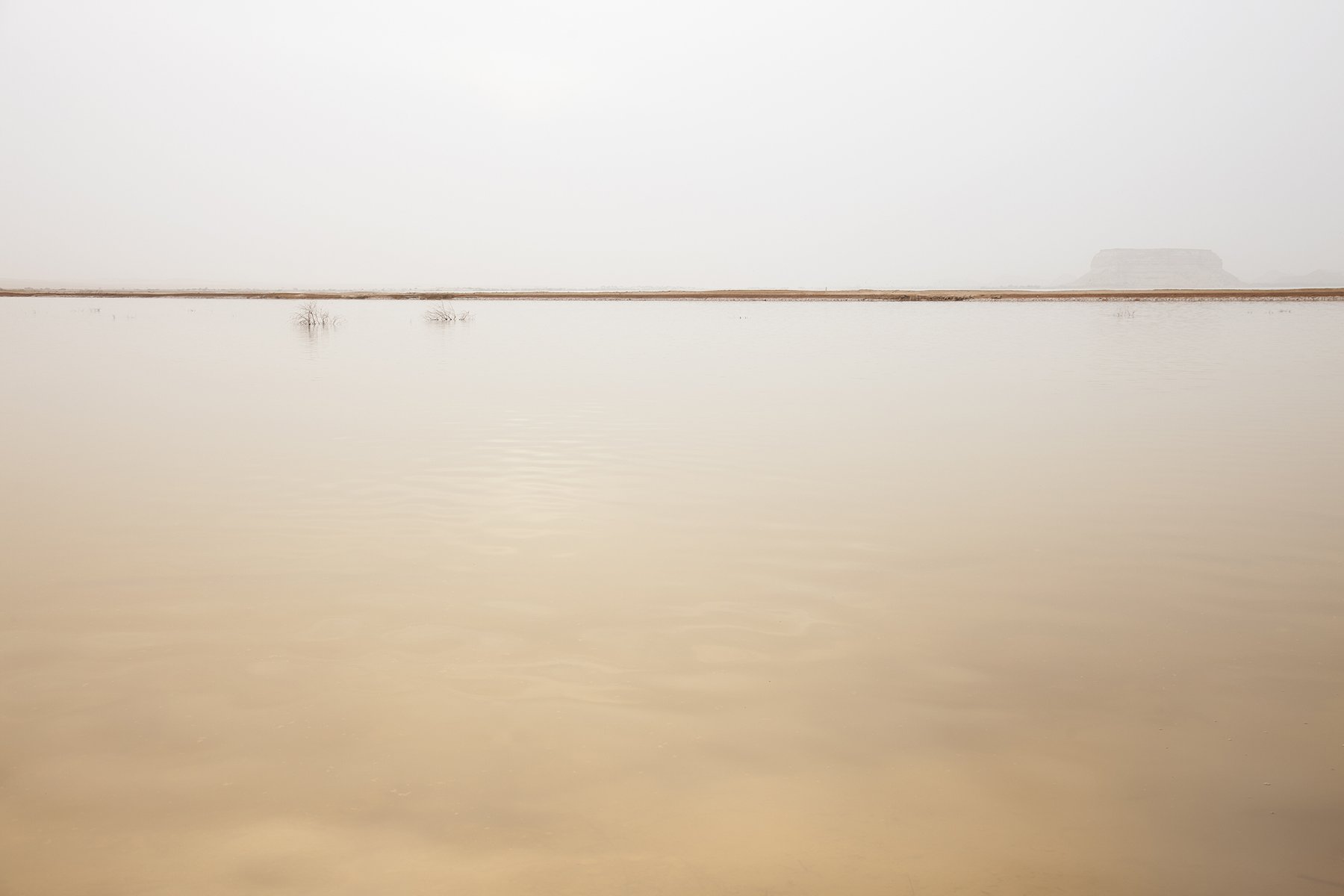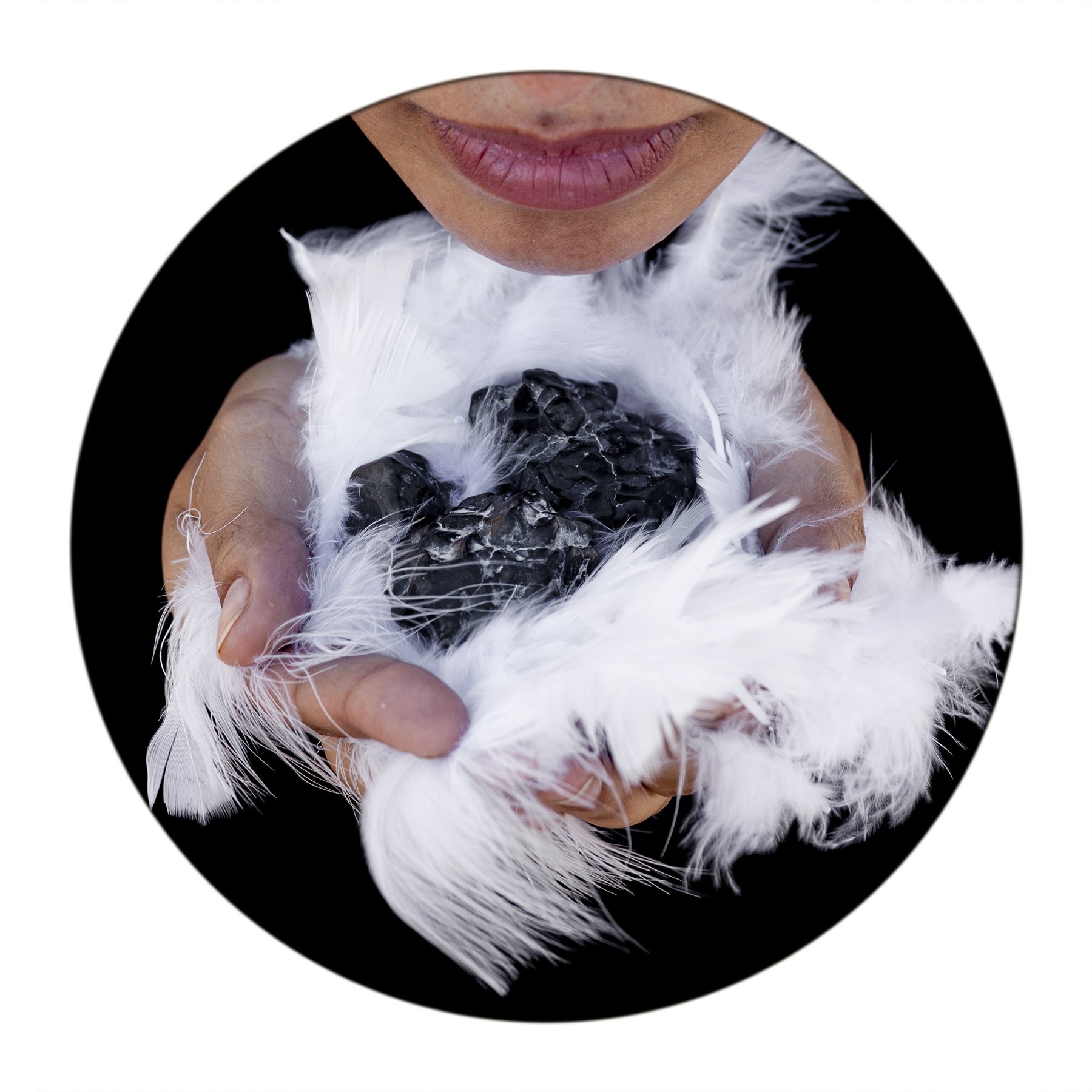Q&A: SAMA ALSHAIBI
By Hamidah Glasgow | December 29, 2022
Sama Alshaibi's (b. 1973, Iraq) photographs and videos situate her own body as a site of performance, considering the social and gendered impacts of war and migration. Her work complicates the coding of the Arab female figure found in the image history of photographs and moving images. Alshaibi's sculptural installations evoke the body's disappearance and act as counter-memorials to war and forced exile. Alshaibi's monograph, Sand Rushes In, was published by Aperture, NYC. It features her 8-year Silsila series (debuted at the 55th Venice Biennale), which probes the human dimensions of borders, migration, and ecological demise.
In 2021, Alshaibi was named a Guggenheim Fellow in Photography. She has been featured in several biennials, including the Maldives Pavilion at the 55th Venice Biennale (Italy), the 21st International Art Biennial of Santa Cruz de la Sierra (Bolivia, 2020), the 13th Cairo International Biennale (Egypt, 2019), the 2017 Honolulu Biennial (Hawaii), the 2016 Qalandia International Biennial (Haifa), and FotoFest Biennial, Houston (2014). She was also selected as one of 60 artists for the 'State of The Art 2020' (Crystal Bridges Museum of Art/the Momentary, Arkansas, 2020) and recently held solo exhibitions at Ayyam Gallery (Dubai, 2019) and at Artpace where she participated as the National Artist in Residence (San Antonio, 2019). She was awarded the prestigious Fulbright Scholar Fellowship in 2014-2015 as part of a year-long residency at the Palestine Museum in Ramallah, where she developed an education program while conducting independent research.
Born in Basra to an Iraqi father and Palestinian mother, Sama Alshaibi is based in the United States, where she is a Regents Chair of Photography, Video, and Imaging at the University of Arizona, Tucson. She holds a BA in Photography from Columbia College Chicago and an MFA in Photography, Video, and Media Arts from the University of Colorado at Boulder.
HG: Thank you for taking the time for this interview. I’ve long been an admirer of your work and find myself returning to the Silsila work of 2009-2017. This body of work exploring the themes of interconnectedness, forced displacement, and climate change specifically related to water is as timely now as when you created the work. How has the meaning of the work changed or evolved since you created it?
SA: Thank you, Hamidah, and the feeling is mutual! It is meaningful for us to have this conversation in the final week of 2022. I just returned from Iraq a few days ago, where I’ve been working on a new project over the past year, with a special focus on a new commission for my mid-career survey in Sharjah, UAE, which opens in the spring of 2023.
As you mentioned, Silsila connects various struggles in an unprecedented fight for existence motivated by water. Through concepts of survivability and sustainability, the project brings attention to the natural resources and the environment we live within. Since the project started, drought and environmental collapse have been devastating the Middle East and North African region, especially Iraq.
Sama Alshaibi, Silsila (Link) from the series Silsila, 2014
Inkjet pigment print at 27 ½ x 39 3/8 inches and Chromogenic print mounted on Diasec at 5 feet 5 3/8 inches x 8 feet 2 3/8 inches
courtesy of the artist and Ayyam Gallery
Temperatures in Iraq topped a record 125 degrees this summer, and ongoing drought limits access to food, water, and electricity for 12 million people in Iraq and neighboring Syria. With Iraq warming twice as fast as the rest of the planet, this is a glimpse of the world’s future.
This year alone has produced ten massive dust storms, sending thousands to the hospital for respiratory treatment. The Tigris and the Euphrates rivers, originating in Turkey, and other tributaries from Iran, feed the southern marshes where I was working. Both countries have built dams upstream, which has drastically reduced water flow. The low levels mean that the salty water of the Persian Gulf flows back into the marshes, increasing soil salinity and destroying the region’s dairy production, fishing, and rice cultivation. The use of damns in Turkey is an example of a ‘hydro-political’ conflict, where countries with natural control over the water resource use their geographic advantage to stress targeted countries.
Iraq is basically at the frontlines of the earth’s climate crisis. Like canaries in the coal mines, the southern marshes of Iraq and the rapidly disappearing Tigris and Euphrates rivers demonstrate what happens when a series of conditions come together to devastating effect.
HG: Are there images you wish you would have made or thought about adding to this series or other bodies work from your earlier career?
SA: Two days before I flew to Baghdad from Sharjah, I woke up in the morning with an idea about making a final work for Silsila in the Mesopotamian Marshes of Southern Iraq. I was born not very far from there, in the city of Basra.
I was lying in my hotel bed contemplating images and performances in the marshes. I started seeing images in my head of Silsila's protagonist on a boat, moving down the narrow canals with the reeds on both sides of her figure. Obviously, that figure is my own, but I don't refer to the character as myself. They are not self-portraits.
I've been saying for years that Silsila ended in 2017, but in my heart, the project never felt complete because I couldn't get into Iraq. Between 2009-2017, working in remote locations such as the deserts of Iraq was impossible due to the conditions of the sectarian war followed by the barbaric rule of ISIL. Iraq was one of the few countries in the Middle East and North Africa that never made it into Silsila, which pained me.
Much has changed in Iraq since 2017, and one year ago this month, I returned to my homeland after a 40-year absence. I also went to Iraq earlier this spring. During those two first visits, I worked on my new project, visiting family, and rediscovering the country I left as a child. While I considered doing a project in the Iraqi deserts to add to Silsila, it wasn't a pressing feeling, and ultimately, I was concentrating on the new work.
However, this past summer, I started to focus my artist lectures on Silsila in relation to Iraq's impending climate calamity, especially the rapidly drying southern marshes. My awareness of Iraq's water issues isn't new, but my friends inspired my focus on the marshes in Iraq. Several were working on short documentaries about the dying southern marshes for various news organizations. Seeing the marshes dying was jarring. My childhood included regular visits to the marshes and being among the Marsh Arabs who also lived in Basra. They were a rich part of my formative years, and how I relate to my homeland. I think it finally sank in that Silsila, which reflects on the story of the end of fresh water in the Middle East and North Africa, had to include Iraq and its marshes.
When I was in the marshes last week, we asked our guide to show us the dried-up areas. I wasn't prepared to see with my own eyes how devastated the region is. It was worse than what I saw in the documentaries because it was real life, and we had just spent the day before riding the boats down the canals, which were filled with animal and plant life. I did a performance for photographs and videos on the parched and dead marshes and in the regions where daily life hummed along as it had for thousands of years. We visited a family living in a traditional reed home floating on the water canals. I scanned the house with my LIDAR and made a few images. The truth is, I don't know how long that family can survive out there.
For the Marsh Arabs and other agricultural regions, entire communities are being displaced, sending ripple effects through Iraq, and accelerating the rural-to-urban migration. Iraq's cities already suffer from widespread unemployment and inadequate infrastructure before this new wave of eco refugees. It is a recipe for more conflict that Iraq cannot afford.
Silsila aims to motivate an interconnected viewpoint when considering climate change. For the final video and images, I want to capture the struggle in the marshes, but ultimately, I want the project to reflect the wandering figure seen throughout the series in her triumphant return home. I think it will be a beautiful video. It has a place in my mid-career survey at the Maraya Art Center and next to the new work in Baghdad. Making the new Silsila work in Iraq was the most emotional and spiritual experience of the entire project.
HG: I'm curious why you chose Ibn Battuta as your inspiration for this work. What about him, his life and travels inspired you?
SA: When I first conceived of Silsila, I was initially interested in shaping a language around a shared identity for the peoples of the MENA region––a history of my people, my faith, from days of greatness to our current warring political reality. Each part of the multimedia installation for Silsila alludes to the historic linkages connecting the region via sea and desert routes and speaks to our collective future.
Ibn Battuta's travel stories were a perfect metaphor to connect and trace back our innate human curiosity in our search for meaning and connection. It implicates the primitive life of the nomadic and caravan travelers and now the contemporary displaced peoples or even those who chose their mobile lifestyles.
Ibn Battuta is the most significant Islamic traveler, having covered more ground than Marco Polo in his journeys from his home in Morocco and as far as China. He set out to complete Islam's mandatory pilgrimage to Mecca. A vision compelled him to wander the earth at a time when few could muster the courage to submit to the curiosity of the 'other' and go beyond the map's edge. He is a bit of a folklore hero for me, traveling far distances in a period when it was difficult to imagine going on such immense journeys. It isn't like he could just hop on a plane. I was attracted to his willingness to journey into the unknown, or at least what was unknown to him. I also like wandering without a clear destination and seeing what the world delivers.
His thirty years of record-keeping, observations, insights, and lessons all grounded in his Islamic faith eventually became Tuhfat al-nuzzar fi ghara'ib al-amsar wa aja'ib al-asfar-Rihlah (A Gift to Those Who Contemplate the Wonders of cities and the Marvels of Travelling) or colloquially known as al-Rihla (The Travels). Transcribed by a young writer, his book is considered one of the most critical accounts of the fourteenth-century Islamic world and gave birth to the foundation of what is now known as the genre of travel writing. His book was my guide, allowing me to use a text that predated the colonialist period. That was a critical part of the project, as I wanted to get past the ideas of nationhood. The figure in Silsila is metaphorically trespassing borders or erasing them with her movement. That is why none of the images or videos in the project names the countries they are located in. The region is imagined as borderless, and time and place layer together to find a whole.
While Ibn Battuta chose to move and wander, the eco or political refugees of modern times do not have a choice in their displacement. My life journey as a political refugee has resulted in my crisscrossing the globe and negotiating 'otherness' with each community I found myself in. Inspired by Ibn Battuta, Silsila acts in the vein of understanding and sharing rather than exploiting differences.
HG: In the image, Permissible Magic, the figure in black with a green scarf appears four times across the landscape. Please tell me more about this image and the meaning of its title.
SA: Most forms of magic in Islam are forbidden. The reason is that the Quran states that Islam and God are superior to magic. In its forbidden form, magic can be used for evil. Yet magic, sorcery, predicting the future, occultism, and amulets are part of everyday life in the Middle East and North Africa. This duality presents an intersection of the people's lived experience of folklore or community tradition, interwoven with religious elements and practices. The blurring of what is forbidden and what is allowed, or what is tangible and what is imagined, is carried out in the mystical traditions of Sufism seen across my project.
Many of Silsila's images explore the magic and mysticism of the desert spaces and the traditions of desert dwellers. The private rituals the figure performs across the series are, at times, Islamic and, in others, practices that evolved from pre-Islamic times. Permissible magic is Islam's distinction of magic found in natural properties or those considered protective, such as asking for God's intervention, including against supernatural powers from the evil eye and other forms of devilry.
The green scarf carries the color's association with Islam and the connotations of a green paradise. The four reflections of the same figure play with visual illusions inherent to the desert, such as a mirage. It also projects that the mystical self-being is more than a single physical body. In Islamic art aesthetics, the singular entity is patterned by multiplying itself, eventually creating a geometric pattern that reaches the heavens and is traced back to its origin. In its relationship to the divine, the individual is both embodied and aspirational. Finally, if three dimensions are all that is needed to describe objects' sizes and locations in the everyday world, the fourth dimension is then an extension. It can be time. It can be faith. It can be permissible magic.
HG: In, The Third Meaning, the figure appears twice in a posture of arranging sand or caring for the sand. This duality is also present in many of the images through reflections and separation of land and sky. How do you come to creating images? Are you pre-planning and sketching, or are they made in the moment through a visceral understanding of what you want to say?
SA: The reflections and duality trace back to the geometric patterning in Islamic art traditions. It also is simply the visual characteristic of what you see with mirror-like salt lakes in the deserts. The quality of those mirrored dual experiences speaks to the idea of the divine and earthly, or self and self-reflection. The deserts and waters of the historically Islamic world taught me this visual lesson. I discovered it by being there and doing the work.
Honestly, during the first three years of making Silsila, I wasn’t sure what the project was about. I worked intuitively, playing with whatever materials I found on the sites I journeyed across. I started by going to the locations Ibn Battuta described in his book, but I also worked with my drivers and fixers to move past all the sites they wanted to take me to. Because video art was a big part of the project, I had to get away from the electrical grid. It isn’t easy to remove electricity poles and wires from video files. I would describe landscapes that I imagined, and these local drivers would use their network of elders to help me get past the typical rural spaces’ tourists would frequent. Many of the sites were ones they had never been to but had only heard about. We drove in a jeep when we could. We walked or rode camels when the sands were too dangerous to drive on. It was an experience for all of us.
I brought feathers to perform with. The feathers are a frequent symbol of migration, both in my practice and others, but it wasn’t until I was in the marshes this past week that I understood why I often included feathers and the sounds of birds in so many of my art projects. The marshes are filled with birds. Seeing and hearing them again was like connecting to my childhood and who I was before the Iraq-Iran war and forced migration. They carry a deeper meaning for me than I can put into words. Giving them to the desert was a sacred act.
With Silsila, it was truly a process of discovery. Some images and sequences of performances would come to me when I first woke up in the morning, but they were like hints, or suggestions, that compelled me to find them in the deserts. I know that sounds strange, but it's the truth. It is how much of my work comes to me, especially Silsila. Knowing what it means comes when I am making the work. The act of performing the work, or being on-site, reveals its purpose.
The final part of the process was in the editing space of a computer. Some images and video shots were completely unmanipulated, and others were constructed or composited in the edit to get to the experience of fantastical imagining. My work often plays with the fictional, filling in the gaps of history, archives, and documentation. Magical realism is my favorite genre of writing. Silsila is a visual form of that expression.
Production Still from Sama Alshaibi’s new video in The Mesopotamian Marshes in southern Iraq, 2022
Image Credit: Daniel Hollis
HG: You have accomplished so much in your career as an artist, professor, and thought leader. What do you aim to accomplish in the next ten years of life?
SA: That is an interesting question. I’ve never really looked that far ahead before. I think it kind of goes against my nature. I can say that some significant changes are on the horizon. This year is the last of my forties, so the next ten years will be my fifties. My youngest son is moving out this summer, to start college. My role as a mother and caretaker is changing.
As an artist, I’ve been working with camera-less imaging technology (a LIDAR) for the past year, and I will show the first of that work this February. It is also a vast departure from my older work in that this long-term project that will not feature my body. I’m also working with non-literary texts and data to create narratives. It is all new territory for me. I think Iraq will be my focus for some time, but it is hard to say.
For me, it is vital to stay a beginner, to keep taking risks, and to walk into the unknown. I’m more comfortable with the unknown and unpredictable than with a plan. The day-to-day life of being a professor at the University of Arizona is certainly grounding, but that is why I need the time to keep it loose.
I trust the universe to bring along meaningful roads, projects, people, and ideas. I’m open, and having my kids move to an independent adult life means I am freer to take chances. Not that being a mom ever really stopped that before. I wish I had more time for production and being in the field. Exhibiting, teaching full-time, mentoring students, and being a productive faculty member requires a lot of time. I hope to find more balance in this part of my career, with more space allocated to artmaking. I’m not complaining, though. I already love what I do, so doing ten more years of it would be a blessing.
HG: Thank you for your thoughtful answers. I’ve learned so much in this interview and look forward to the new work the addition to Silsila and to the exhibition next fall with the Center for Fine Art Photography.
SA: Thank you!
All images © Sama Alshaibi


